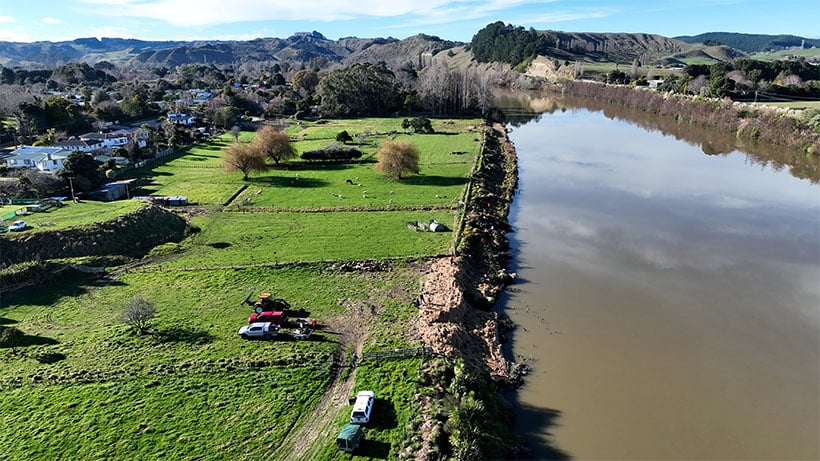An analysis of the climate threats facing one of Scotland’s most treasured natural and cultural sites has provided valuable insights into protecting Australian World Heritage sites including Kakadu and Uluru-Kata Tjuta.
James Cook University Professor of Physical Sciences Scott Heron has played a key role in the identification of the three key threats from climate change to the UK’s only mixed World Heritage property, St Kilda, located about 60 kilometres off the Scottish Isles.
A report published by Historic Environment Scotland (HES) and the National Trust for Scotland (NTS) reveals warming land and sea temperatures, more frequent and severe storms, and changes to ocean currents around the small Scottish archipelago would make it even harder to conserve its unique built and natural heritage.
Professor Heron, who is also the UNESCO Chair on Climate Change Vulnerability of Natural and Cultural Heritage, co-developed the Climate Vulnerability Index (CVI) which assesses the potential impact of changes to climate in World Heritage Sites on these important places of historic and natural significance.
”In the case of St Kilda, this is the first time the method has been applied to a place designated for both its natural and cultural significance,” Professor Heron said.
”The success of the CVI application at St Kilda is particularly relevant for Australia, which is home to four mixed UNESCO World Heritage properties of Kakadu, Uluru-Kata Tjuta, Willandra Lakes, and the Tasmanian Wilderness that all hold natural and cultural significance.”
Professor Heron said to date, the CVI had been applied at World Heritage properties in 15 countries across marine and terrestrial locations, including urban and rural settings, ranging from a small historic wharf district in Norway to the coastal expanse of Shark Bay, Western Australia and a vast inland forest in DR Congo.
”In each case, the CVI outcomes are informing management actions that can be implemented now to reduce impacts from future climate change,” he said.
“Preparations continue for additional CVI applications, including analyses for Scotland’s two other World Heritage Sites, New Lanark and the Forth Bridge. The partnership with Historic Environment Scotland has been of great benefit in developing and expanding the utility of the CVI.”
Professor Heron said the key finding from the work on St Kilda is that threats from climate change to these places of significance are unique and transcend nature-culture distinction.
”The transferrable part from each CVI assessment is the process and that we must understand the intricacies of each individual place. When it comes to mitigating the impacts of climate change, a one-size-fits-all approach just won’t work.
”While the individuality of each location is becoming more evident through our work in places across Africa, Europe and here in Australia, response actions in each place inform options to pursue in others.”
Professor Heron said the CVI assessments of Scottish World Heritage, undertaken to-date, indicate moderate to the highest levels of vulnerability to climate threats including from changes in precipitation and temperature.
”These vulnerabilities represent substantial risks from future climate change to the heritage values in each site,” he said.
“The analyses also indicate there are likely to be impacts on many communities from the climate change-driven decline in World Heritage values.
“Adaptation strategies discussed during the CVI process in Scotland range from improving understanding of specific risks, such as through enhanced flood mapping in Edinburgh, to undertaking actions that mitigate impacts, which includes management of tourist foot traffic at Orkney, especially during periods of heavy rainfall.”
HES Climate Change Policy Manager Dr Mairi Davies said HES believes the historic environment sector, with organisations such as the National Trust for Scotland and tools such as the CVI, has a crucial role to play in the development of a climate ready Scotland.
”It is becoming increasingly clear that action must be taken on every level,” she said.
NTS Property Manager Susan Bain said taking care of St Kilda was a huge task for the Trust.
“We have certainly been experiencing the impacts of climate change on St Kilda for decades, with the impacts on some of the seabird species and marine habitats being particularly profound. This report tells us that in the future we will have more and more challenges to manage and it will be increasingly difficult to do so.
“St Kilda is a special place, and the National Trust for Scotland is privileged to care for its nature, beauty and heritage for everyone. The scale of this task is only going to grow and our charity will need more and more support to carry out our work in the future.”
The report, Climate Vulnerability Index Assessment for the St Kilda World Heritage property, can be found here.
For further background on St Kilda, visit the National Trust for Scotland website.








